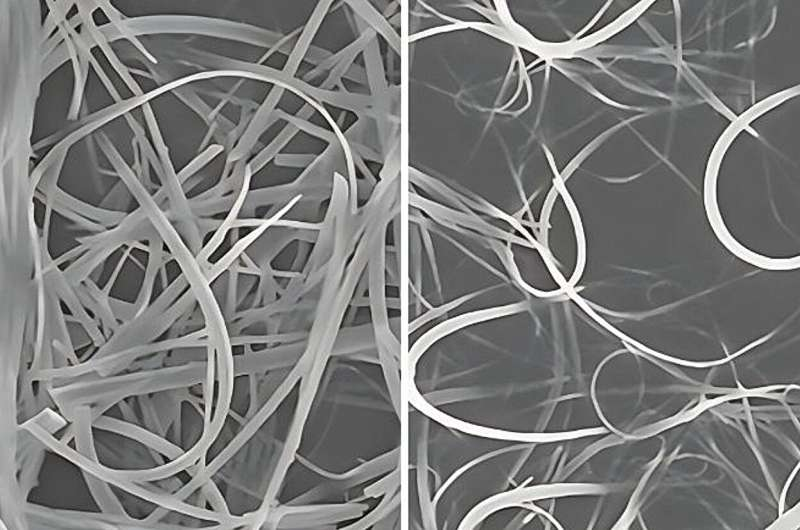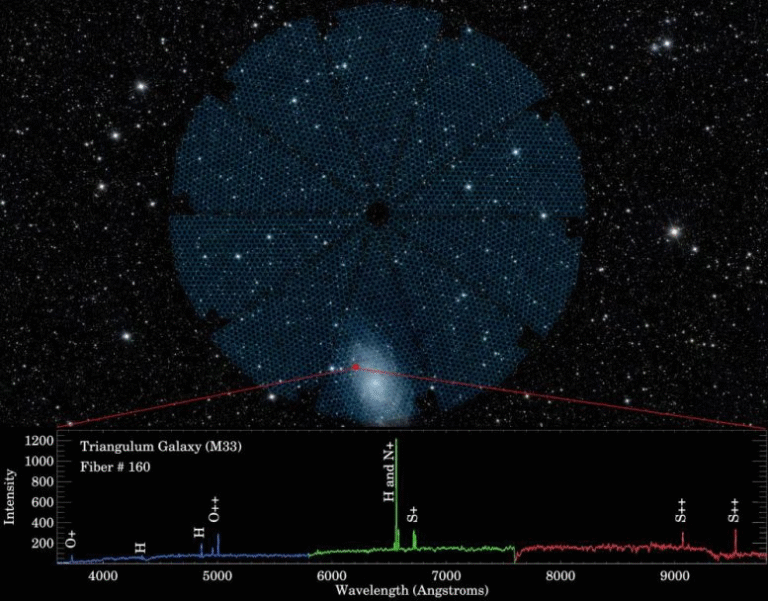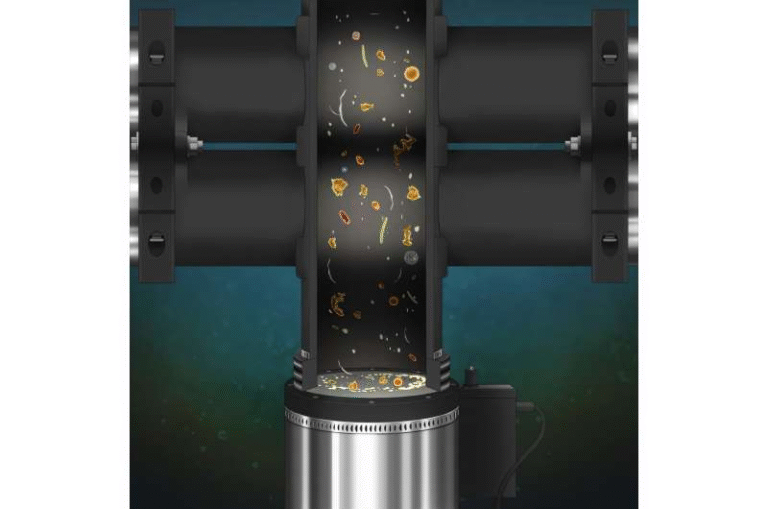Bending Crystals Naturally: How Scientists at the University of Houston Made Crystals Twist Themselves

A group of researchers at the University of Houston has discovered something that sounds almost magical — crystals that bend and twist on their own, without any physical force, heat, or radiation. The finding could change how we design everything from flexible electronics to safer, more effective drugs.
The work was led by Jeffrey Rimer, the Abraham E. Dukler Professor of Chemical Engineering, whose research at the Welch Center for Advanced Bioactive Materials Crystallization focuses on how crystals form and grow. This time, his team stumbled upon a surprising natural phenomenon while studying ammonium urate, a salt that forms in some types of kidney stones.
The Big Discovery
The study, published in the Proceedings of the National Academy of Sciences (PNAS) in 2025, shows that ammonium urate crystals can spontaneously bend and twist during growth, without anyone touching them or applying any external stimulus.
Normally, when scientists want to change the shape of crystals, they use mechanical stress, heat, radiation, or laser light to force the crystal structure to deform. But in this case, the crystals did it on their own — all thanks to a chemical trick involving tautomers.
What Are Tautomers and Why Do They Matter?
A tautomer is a type of molecule that can shift its atoms around — mainly by moving a hydrogen atom and rearranging its bonds. This constant shifting means that even though the molecules have the same chemical formula, they exist in two or more interchangeable forms.
In the case of ammonium urate, these tiny structural shifts lead to something much larger: crystal bending. The researchers found that one form, known as the minor tautomer, acts as a growth modifier. When it sneaks into the growing crystal, it disrupts the crystal’s internal structure by introducing defects, such as twin boundaries, screw dislocations, and edge dislocations.
Those defects don’t stay microscopic — they build up and cause macroscopic bending and twisting of the entire crystal. It’s a bit like growing a spaghetti noodle that starts to curl itself as it forms.
How the Experiment Worked
The team didn’t just rely on visual observation. They used a combination of cutting-edge microscopy and spectroscopy techniques to dig into the details. Among these were:
- Transmission Electron Microscopy (TEM) and electron tomography to visualize how the crystals curved in three dimensions.
- Atomic Force Microscopy (AFM) to measure mechanical changes across the crystal’s surface.
- Spectroscopic analysis to confirm the presence and behavior of the tautomeric forms.
By combining all this data, they proved that the bending was intrinsic — it happened because of molecular changes during growth, not because of outside interference.
They also showed that the degree of curvature — how much a crystal bends or twists — can be tuned by changing the growth conditions, such as the solution chemistry, pH, and supersaturation levels. In other words, scientists can now control how crystals bend simply by adjusting the environment they grow in.
Why This Matters
This discovery is much more than a scientific curiosity. It opens up entirely new ways to design materials that are both rigid and flexible — something that’s been difficult to achieve. Here’s why it’s so exciting:
- Smart Materials: Crystals that bend themselves could be used in soft robotics, sensors, and optoelectronic devices that respond dynamically to their environment.
- Drug Design: Around 30 of the top 200 pharmaceutical drugs are tautomeric compounds. Understanding how tautomerism affects crystal shape, defects, and dissolution could lead to better drug formulations. If the shape of a drug crystal affects how it dissolves, this could change how drugs are absorbed and delivered in the body.
- Biological Insight: Because ammonium urate also appears in pathological crystallization (like kidney stones), the research could help explain why some stones take on unusual bent or twisted shapes inside the human body.
Rimer’s team believes that learning how to control this bending process could lead to safer, more predictable materials — not only for manufacturing and electronics but also for medical applications.
A Closer Look at the Defects
To understand what’s really happening inside these crystals, let’s talk about defects — imperfections in the regular atomic arrangement. In most cases, scientists try to avoid them. But here, they’re the heroes.
When a minor tautomer inserts itself into a crystal, it slightly disrupts the way molecules stack. This disruption spreads as the crystal continues to grow, creating dislocation lines that act like hinges or joints. These defects make parts of the crystal grow at slightly different rates, causing it to curl or twist as it gets larger.
Using high-resolution electron microscopy, the researchers mapped these dislocations and confirmed their presence along the curved regions. The bending wasn’t random; it followed clear structural patterns dictated by these microscopic imperfections.
Controlled Bending: A Step Toward “Smart” Crystals
The ability to control the curvature of crystals opens up exciting possibilities in crystal engineering — the science of designing and manipulating crystals for specific purposes.
By tweaking the solution conditions, Rimer’s team managed to fine-tune how much the crystals bent. This shows that it’s not just an accidental process — it can be directed and replicated.
In practical terms, that means we could one day engineer crystals that change shape in response to environmental cues, paving the way for next-generation materials in electronics, medicine, and nanotechnology.
Broader Applications and Future Questions
While the current study focuses on ammonium urate, the same principle might apply to many other tautomeric systems — especially in organic and biological materials.
There’s still plenty to explore:
- Can this tautomer-driven bending be replicated in other crystal systems?
- How can the fraction of the minor tautomer be precisely measured and controlled?
- Could similar processes explain natural crystal morphologies found in living organisms or geological formations?
Rimer’s team suggests that this phenomenon might occur more often than we realize — it’s just that no one was looking for it in this way before.
The Connection to Human Health
Beyond the lab, this discovery has a fascinating link to medicine. Ammonium urate crystals are a component of kidney stones, especially in people with certain metabolic conditions or dehydration.
The team’s observations suggest that tautomeric effects could influence how these biological crystals form and evolve inside the body. That means understanding these molecular quirks might one day help us prevent or manage kidney stones by controlling their microscopic growth behavior.
The People Behind the Study
Alongside Jeffrey Rimer, the research team included Weiwei Tang from the University of Houston, Taimin Yang from Stockholm University, and Qing Tu from Texas A&M University. Collaborators from other institutions also contributed expertise in microscopy and materials analysis.
Their combined work provides one of the clearest examples yet of how molecular dynamics directly translate into macroscopic behavior in crystalline materials.
Why This Discovery Stands Out
Science has long known that crystals can bend — but usually not without help. Until now, such behavior required external pressure or heating. What makes this discovery stand out is that the crystals are doing the work themselves, powered by the molecular motion of tautomers.
This natural self-bending not only challenges what we know about crystal mechanics but also shows that tiny molecular shifts can lead to large-scale physical transformations.
That’s the kind of insight that pushes material science into new territory — one where chemistry, biology, and physics all meet in the most unexpected ways.
Research Reference:
Tautomerism Induces Bending and Twisting of Biogenic Crystals — Proceedings of the National Academy of Sciences (2025)





